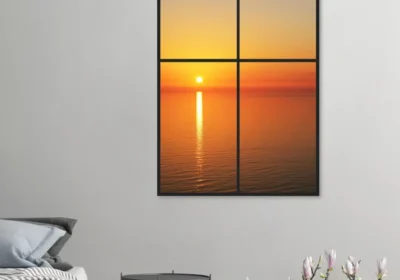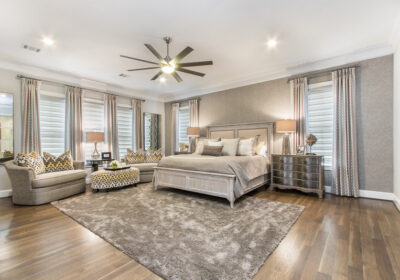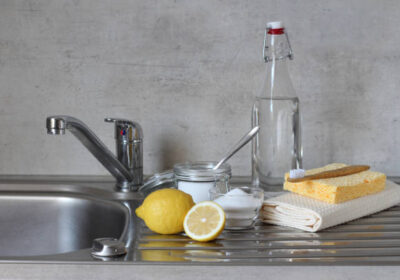Designing a Kitchen That Suits Your Needs
Whether you’re thinking of designing a new kitchen, or renovating an existing one, there are a few things you should consider first.
The design of your kitchen should be geared toward the needs of your family. An efficient floorplan, smart storage, ergonomic features, and a pleasing aesthetic will help your kitchen function well.
Layout
Kitchens should be comfortable, easy to navigate and visually pleasing. That’s why it’s so important to design the layout that suits your needs. Your CliqStudios designer can help you choose the right layout that will maximize space while making the most of your home’s existing features.
Whether you’re building a new home or updating your current one, selecting the right layout will be crucial for creating a functional space that works well for you and your family. There are a few different layouts that are commonly used, but each has its benefits and can work for a variety of purposes.
The single-wall kitchen is a great option for smaller spaces because it can be space efficient without sacrificing functionality. This type of layout usually involves installing cabinets against a single wall.
If space permits, adding an island can greatly increase the functionality of this layout. It gives you extra prep space and can also double as a dining area for when you have guests over.
Another layout that is often used in studios or small spaces is the L-shaped kitchen. This is a very versatile layout that can accommodate more cooks than the galley kitchen. It also has the advantage of not requiring non-cooks to walk through the kitchen.
While the classic work triangle loses its general shape in this layout, you can still optimize it with pull-outs and carousels to make getting to hard-to-reach areas as simple as possible. It’s also a good idea to establish a message center in this space, where you can place a bulletin board or chalkboard to jot down reminders or grocery lists.
There are many other layouts that may be ideal for your home, but it’s important to consider your needs before selecting the right one for you. If you have young children, elderly relatives or pets who need space for food and water bowls, find a layout that can accommodate these necessities.
Choosing the right layout for your kitchen can be a daunting task, but it doesn’t have to be. Taking the time to plan a functional kitchen that suits your needs will ensure that you have the perfect home space for cooking, entertaining and cleaning.
Appliances
Appliances are crucial in a kitchen as they help to prepare and cook meals. They also make it easier to clean up after preparing food. They are available in different sizes, shapes and designs. They can either be standalone appliances or installed into the cabinetry.
As you are designing your new kitchen, you will need to consider which appliances will be necessary for your specific needs. This will help you to determine the best layout for your space.
To start with, you must consider the size of your kitchen and the number of people who will be using it. You must also take into account the amount of time you spend in your kitchen and the frequency of your cooking activities.
Depending on the size and function of your family, you must also decide whether to go for big appliances or smaller ones. If you have a large family, you may need to get bigger appliances like a refrigerator or more than one oven to accommodate your daily cooking needs.
You must also keep in mind the amount of storage you need for your kitchen. If you do not have enough storage, it will be difficult for you to store your kitchen items properly.
The size of your appliances must be proportioned to the other aspects of your kitchen, including the depth and width of your cabinets. Having too deep an appliance will cause it to stick out past the cabinetry and can create a negative visual impact on your kitchen design.
In the same vein, having too wide an appliance will eat up valuable workspace in your kitchen and make it difficult for you to work. In addition, oversized appliances can create a mess and distract from the overall design of your kitchen.
Before you buy appliances, you must consider the brand, style and features that will be most compatible with your kitchen’s aesthetics. Besides, you must also consider your budget.
Once you have established your budget and functional requirements, it will be much easier to narrow down your appliance choices. It is important to prioritize these considerations over aesthetics in order to avoid creating a kitchen that does not meet your needs.
Lighting
The lighting in a kitchen plays a key role in determining how the room is used. The proper light can help make a kitchen more pleasant to be in and functional, while also adding ambiance and a sense of style.
The best way to achieve this is by using a mix of lighting sources. This will create a balanced scheme to enhance the look and feel of the space, as well as provide different moods at the touch of a button.
In addition to ambient lighting, there are a number of other types of lights that can be used in a kitchen. These include task lighting, which illuminates small zones like islands and countertop prep and cooking areas; accent or decorative lighting, which highlights a specific feature or area of the room; and LED lights, which are an energy efficient option that lasts much longer than incandescent bulbs.
When designing a kitchen, the first step is to determine how much light you need. This will depend on the size of the space, as well as its layout and finishes.
Generally, the best source of ambient lighting is recessed ceiling fixtures. These provide even illumination across the entire room, which is important to avoid shadows under cabinets and in corners.
However, if you have dark countertops, you may need to supplement ambient lighting with under cabinet task lighting. This will illuminate the work surface and prevent accidents during food preparation.
Another lighting type that will work well in a kitchen is pendant lighting. These are often hung overhead, but can also be mounted to the floor or a wall.
While these fixtures do not offer the same degree of ambient lighting as recessed ceiling fixtures, they can add a great deal of character to a kitchen. These fixtures are available in a variety of styles and colors and can be a great addition to any space.
Finally, if you have artwork that you want to highlight in your kitchen, consider a recessed fixture that can be adjusted to shine a spotlight on the piece. This will not only help to bring the art to life, but will also provide more natural light that will make the work easier to see.
Storage
When you design a kitchen, it is essential to create storage spaces that suit your needs and keep your space organized. The most important aspect of this is the placement and accessibility of the storage areas.
A good kitchen layout will incorporate different storage spaces for storing all of the items that you use in the kitchen, from food preparation to cleaning supplies and cooking utensils. This will ensure that you have easy access to everything you need and that all the storage spaces are in a convenient location.
For example, if you are planning to have a banquette seating area in your kitchen, consider adding pull-out drawers so that you can keep crockery, cutlery and other essentials close by and within reach of the sitting area. This will ensure that everything is within easy reach and reduces the risk of clutter.
Another great way to make sure that you have plenty of storage is by incorporating an island into the kitchen design. These islands typically feature additional cupboards and shelves that will add to the amount of storage in the kitchen.
These islands are a popular choice because they are often attached to the wall with a sink and provide extra workspace, making it easier for you to prep and cook meals. The islands also give you easy access to the stove, sink and other appliances.
A great way to utilize the island countertop is by adding a drinks fridge and wine racks. These can increase the storage potential of your island considerably, as well as making the area look incredibly stylish.
Similarly, modular shelving is a great option for minimalist interiors and can be custom designed to suit your individual storage needs. This system from Scandi brand String includes accessible shelves for pots and pans, as well as multiple rails and canisters for storing utensils.
When it comes to storing produce in the kitchen, clear bins are an excellent solution. They can be used for dry goods and spices, as well as other things that need to be kept at a cool temperature.










